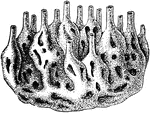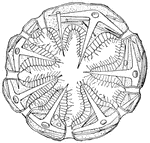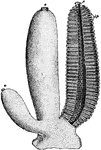Clipart tagged: ‘porifera’

A. Primordialis
"Simple sponge (Ascetta primordialis). Note the vase-like form, the apical osculum, the inhalant pores…

O. Lobularis
"Diagrammatic representation of development of Oscarella lobularis. Bl., Free-swimming blastula with…
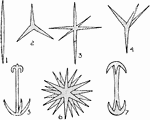
Sponge Spicules
"Sponge spicules. 1, Monaxon; 2, triod; 3, triaxon; 4, tetraxon; 5, anchor; 6, polyaxon; 7, a kind of…

Sponge
In this simple sponge, water enters minute holes in the sides and passes out of the opening at the top…
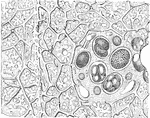
Lower Section of Sponge
An illustration of the lower portion of a sponge. O, OS, and M are illustrations of sponge eggs magnified…
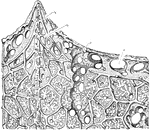
Upper Section of Sponge
An illustration of the upper portion of a sponge: p, Pore; s, Subdermal cavity; c1, chief fiver of the…

Sycon Gelatinosum
"Transverse section through the wall of a cylinder (parallel with the course of the canals), showing…
